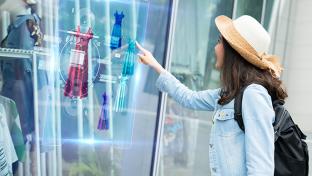AI Is Transforming Loss Prevention—But It’s Not the Only Tool You Need
Discussions about the importance of developing more secure retail models have intensified amid headlines touting a rising frequency in organized retail crime (ORC) events, the growing cost of shrink, and the spate of store closures that have resulted from these trends. When LPRC convened for its 2023 Impact conference in October of this year, these issues were naturally front and center.
That said, optimism about the future was equally prominent at the event as retailers explored the ways AI is bringing them closer to more secure and agile retail models.
A New Model Takes Center Stage
The potential of “holistic” loss prevention (LP) was a primary focus throughout the show, and the idea became a common thread in the expo’s events, talks, and displays. The concept encourages retailers to view loss prevention efforts within the larger context of their operations and take a proactive approach to mitigating shrink. In practice, it means supplementing existing solutions — like alarms and cameras — with new technologies to harden retail targets and elevate deterrence levels without impacting shopper experiences.
Artificial intelligence (AI) emerged as a primary driver of holistic LP programs, which explains the sudden boom in popularity this approach has experienced. It seems AI is the latest piece of the LP puzzle, providing the context retailers need to elevate the deterrence value of their connected systems and safeguard their operations for a new era.
With AI more ubiquitous, effective, and accessible than ever before, its power to unify retail ecosystems has become increasingly apparent as has its potential to help retailers do more with their:
Acousto-magnetic (AM) Electronic Article Surveillance (EAS) Systems
AM-based EAS systems have long been a staple in retail, and most retailers are familiar with their use. AM-enabled alarms, wraps, and hard tags are critical reactive tools that allow LP teams to respond to incidents in progress as well as act as visual deterrents to theft.
When the data that AM EAS systems compile are made available alongside other relevant internal and external datasets through connected systems, retailers can use AI to analyze and reconcile these records to provide more precise insights into operations.
Cameras and Video
Another familiar technology, cameras and video feeds have a critical role to play in secure retail. Not only do camera feeds help LP teams monitor the floor more easily, but customer-facing video displays act as a powerful deterrent to criminals.
The value of cameras and video surveillance is enhanced significantly when retailers pair these tools with analytics suites. Computer vision, for example, which uses AI tool to monitor video feeds in real-time, can help retailers predict retail crimes based on shopper behaviors, develop evidence packages to aid in criminal investigations, and highlight the gaps in security that may exist within a store.
Radio Frequency Identification (RFID) Systems
RFID solutions give retailers the ability to track merchandise throughout the supply chain, on the floor, and beyond the store’s walls. Emerging ultra-high frequency (UHF) RFID products supercharge these applications, making it easier for retailers to track items at scale. For example, using UHF RFID tags allows retailers to identify each individual item within a packed shipment to get a better view of inventory.
RFID also has practical applications for product recovery, making it easier for retailers to prove stolen items originated in their supply chains. Since each item has its own, unique identifier, RFID tags act as proof of origination, allowing law enforcement agencies to return stolen goods to retailers for sale provided that the items are not damaged.
When paired with advanced analytics and robust data-based recordkeeping, RFID can enable item-level inventory programs that help retailers get a better understanding of what leaves the store, when it leaves, and the other items that go with it. This can shed light on patterns related to bulk theft events, the impact of casual shoplifters on shrink, and more to provide a nuanced view of what drives losses on the local, regional, national, and enterprise-wide levels.
The Sum of Its Parts
Though AI has the potential to do all of the above, retailers should keep in mind that it is not the only tool necessary. While AI helps take the guesswork out of LP programs, it’s not the be-and-end-all of the system. It’s just the thing that brings the rest of the ecosystem together.
Yes, the technology’s predictive and analytics capabilities may just be what was missing from traditional LP programs but holistic LP must be just that: holistic. The insights it yields are only as valuable as the data to which it has access, the other tools in the system, and the people who put it to use.






